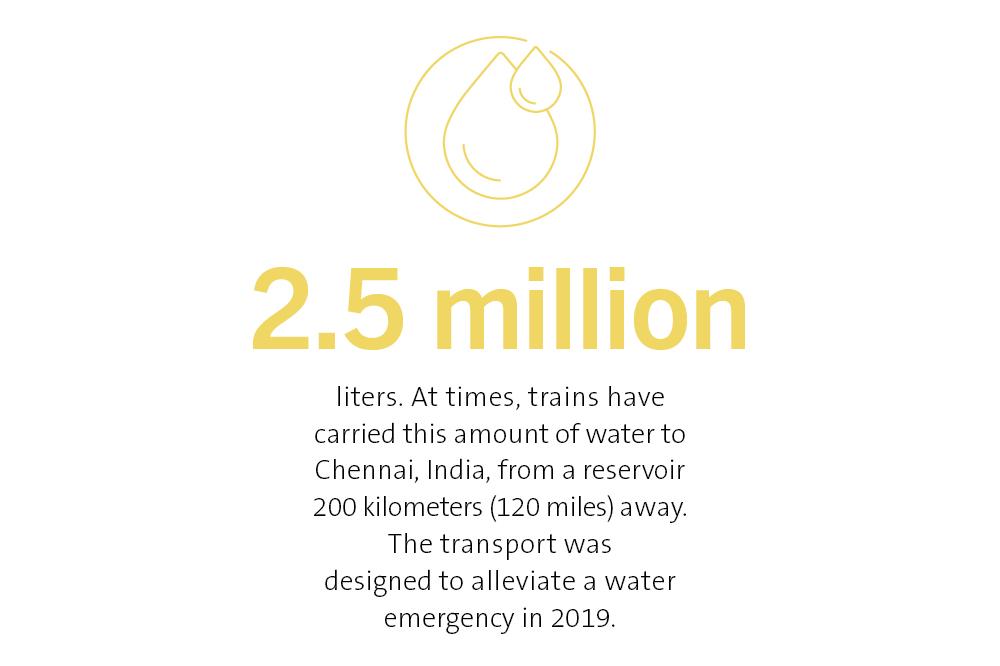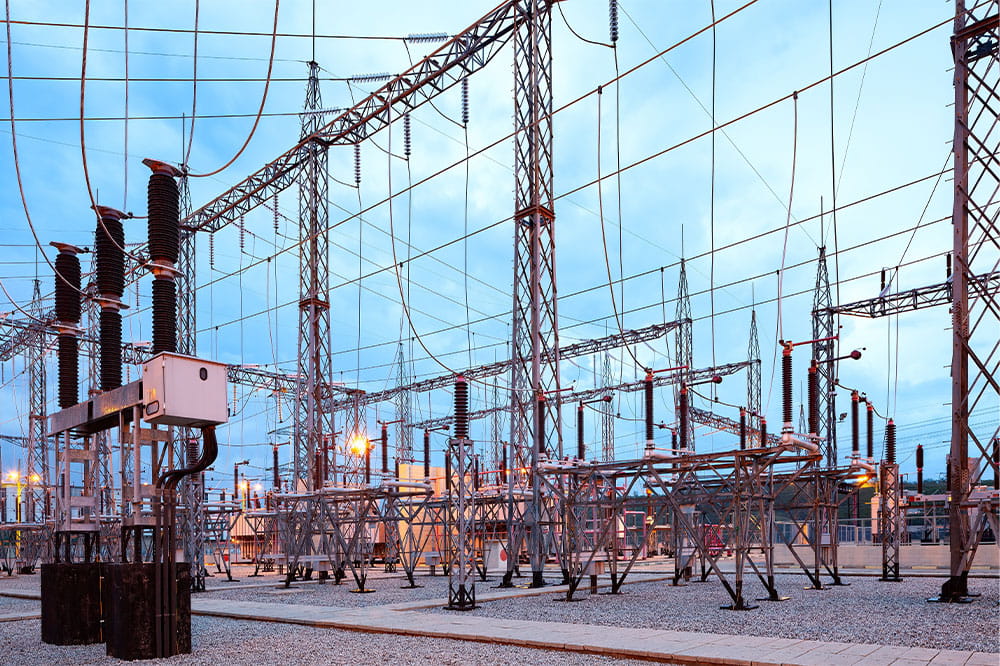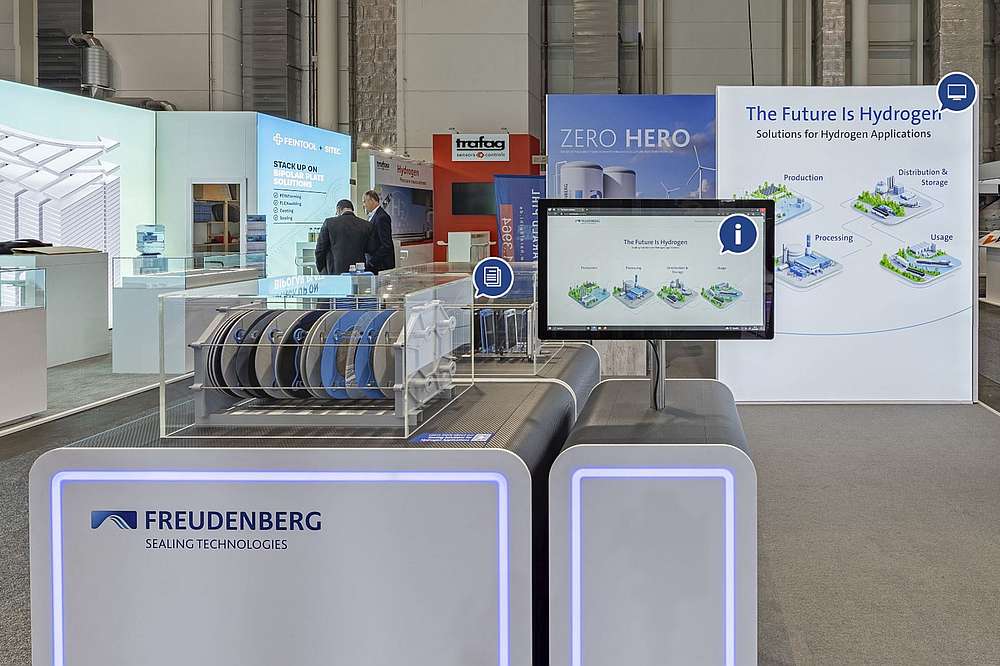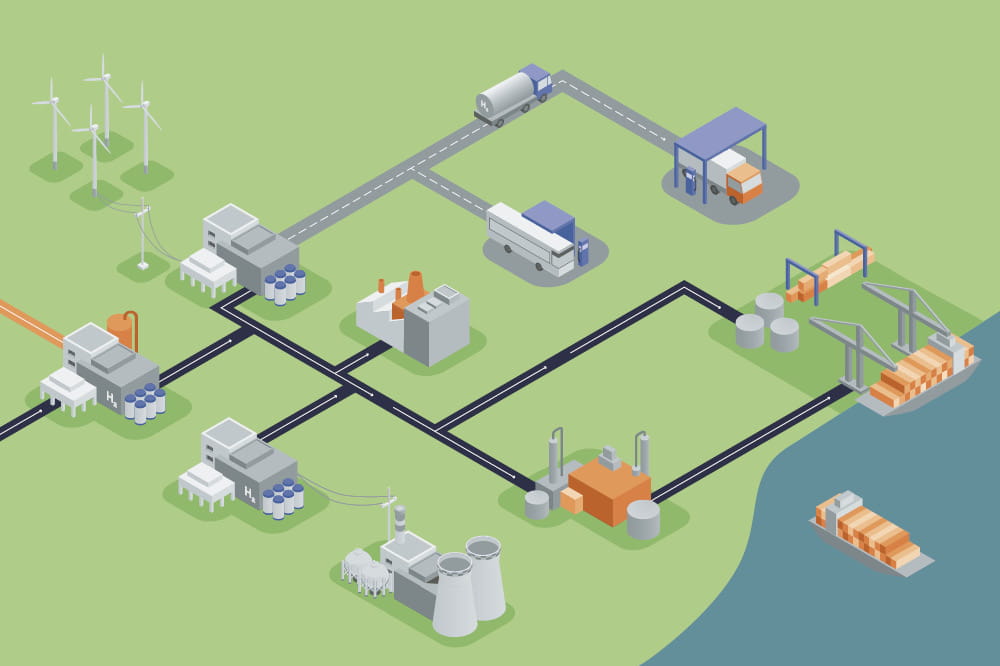Obtain news and background information about sealing technology, get in touch with innovative products – subscribe to the free e-mail newsletter.
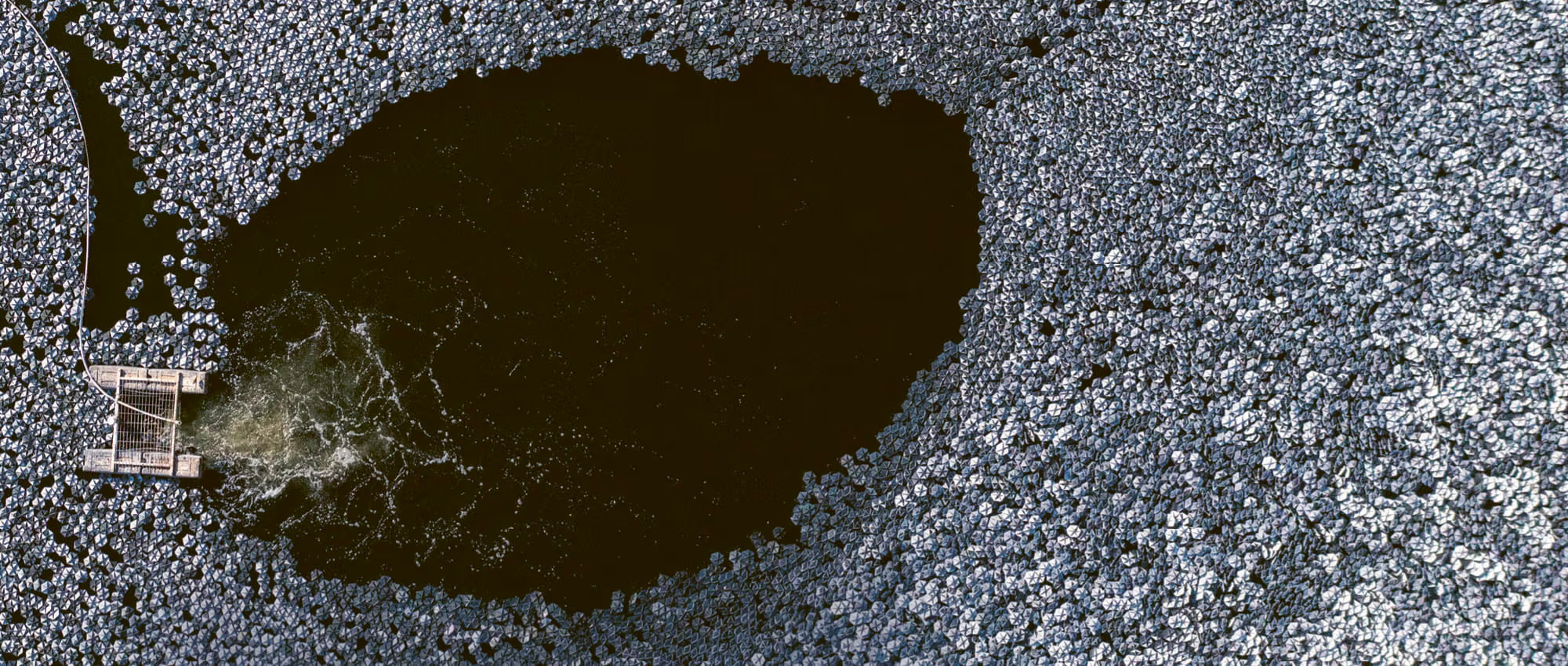
12.07.2022 | Story
Troubled Waters
Many cities are increasingly having problems with water. Sometimes water supply is dangerously scarce. At other times, heavy rains lead to flooding. Caught between these contradictory situations, metropolises are seeking solutions. ‘Sponge cities’ could be an answer.
One-quarter of cities with a million or more inhabitants are doomed to have problems with their water supply. Each year, they use more than 80 percent of their available ground and surface water. An international team of researchers arrived at this finding back in 2014. In the last few years, metropolises such as Los Angeles, Mexico City, Cape Town, Chennai and Beijing saw what happens when water runs low. Water-related stresses in urban areas have diverse causes: waste, outmoded infrastructure, mismanagement, population growth and drought.
Plastic Balls, Seawater Desalinization and an Iceberg
The cities are tackling the problems in very different ways, and few are sustainable. In Los Angeles in 2015, authorities arranged for several million black plastic balls to be dumped into the Sylmar reservoir. The balls were supposed to prevent the evaporation of the costly liquid after several years of drought. The officials later put the savings at about 1,150,000 cubic meters (about 304 million gallons) of water per year. Researchers at the Massachusetts Institute of Technology (MIT) made their own calculations. Their conclusion was that just the production of the apple-sized plastic balls would have consumed about 2,900,000 cubic meters (766 million gallons) of water.
Cape Town, South Africa, was hit by a water shortage in 2018. After three years of severe drought, the most important reservoir for the city and its millions of inhabitants held only 10 percent of its capacity. In response, the city administration ordered steep cutbacks on water use. Even a shutoff of the water supply seemed possible. The city took other steps as well. It collected groundwater, ordered the recycling of industrial water and urged residents to limit their consumption. In addition, farmers diverted their water supplies into a reservoir. These measures and the arrival of rain ultimately defused the situation. One sign of the utter desperation was the idea of a South African shipping expert to tow an iceberg to the Cape Town area from Antarctica, which is about 3,000 kilometers (1,800 miles) away. This would have guaranteed up to 150 million liters (nearly 40 million gallons) of water a day over the course of a year. On the other hand, the city authorities began to build systems to desalinate seawater. The approach is indeed used worldwide, but it is expensive and energy-intensive.
Water From the Ground and by Train
Along with drought, massive growth in the city’s population contributed to the crisis. Like Cape Town, other cities responded to the trend by exploiting their groundwater. The example of Mexico City shows what can happen. The earth dries out and parts of the city sink. In the area around the cathedral, the ground is said to have sunken about 12 meters (39 feet) in the last 150 years.
Thanks to the monsoon, India has abundant water. Between June and September, it delivers 75 percent of the annual rainfall in this populous country. But if it ever becomes less plentiful, serious consequences will loom for the water supply to the country’s many cities with a million or more inhabitants. In 2019, Chennai, once known as Madras, saw the results of several periods of inadequate rainfall. When the supply of stored water was nearly exhausted, trains brought in 2.5 million liters (660,000 gallons) of water each day from a reservoir 200 kilometers (124 miles) away. Just four years earlier, Chennai was literally under water after severe rainfall.
Chennai serves as a bellwether for more and more cities that will have to adapt to extreme weather. Climate change is reducing the temperature difference between the two poles and the equator. This is calming the jet stream and high and low pressure areas are moving more slowly due to weakening winds at high elevations. The result: These conditions remain longer above a region and can thus produce extreme aridity or heavy rainfall. In addition, as temperatures rise, clouds absorb more moisture, which can result in more precipitation.
‘Sponge Cities’ for Water Storage
More and more cities will have to learn to deal with water shortages and heavy rains. Their structures are compact and cover the earth, causing them to heat up very quickly. Yet severe cloudbursts quickly overwhelm their drainage systems, since they are not designed to drain away large amounts of rainfall. ‘Sponge cities’ are a possible solution. They are designed to absorb huge quantities of water like a sponge and release it later. This requires subterranean drainage and storage, along with water-permeable ground covering and tree trenches. In these trenches, cities plant trees whose root systems tolerate water temporarily stored around them. All of this requires costly, well-planned reconstruction.
It is easier to plan for retention basins and open spaces that can store precipitation when new neighborhoods are created. Low-lying sports fields can be temporarily flooded. Sponge cities also become greener. In addition to the creation of new lawns and parks, façades and roofs are covered with greenery. They absorb rainfall – they don’t just drain it away like conventional roofs and cement façades. They also give off moisture through evaporation and make a city’s climate more comfortable.
Those responsible at the city of Hamburg view the idea positively. They even have a plan to landscape about two-thirds of all the city’s roofs to catch 60 percent of its precipitation. For every construction project, the Danish capital Copenhagen precisely specifies how much water the built-up surfaces have to hold. For several years, 30 metropolises in China have been pursuing the ‘sponge city’ approach. Someday 70 percent of their rainwater is supposed to be captured and reused – or permeate the landscape. Beijing, which was hit by severe flooding in 2012, is among those 30 cities. And yet the capital is located in the country’s arid north, which is why the World Wide Fund for Nature (WWF) called it one of the world’s 20 megacities that are especially susceptible to water-related stress. The concept of a sponge city could help Beijing manage its rare heavy precipitation and make the water available during dry periods. An ambitious, if certainly sustainable, plan, indeed.
More news on the subject Sustainability

Join Us!
Experience Freudenberg Sealing Technologies, its products and service offerings in text and videos, network with colleagues and stakeholders, and make valuable business contacts.
Connect on LinkedIn! open_in_new